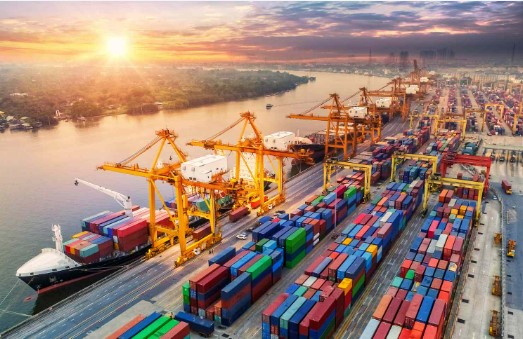We have established before that exports are critically important for a country like India to grow fast. However, exporting goods from India can be an incredibly challenging process due to the complex legal and regulatory framework that involves multiple government agencies. From the moment a business decides to export its products to international markets, they are met with significant obstacles in accessing relevant information related to exports. While this information is available in the public domain, there is a lack of a single, verified source of consolidated information on export document requirements and step-by-step procedures to create them. As a result, businesses must navigate through multiple tabs and backlinks on department websites, often leading to confusion and misinterpretation of the information.
Furthermore, understanding the export laws and regulations of importing countries, including licensing and documentation requirements, product standards, and labelling regulations, is another concern. Exporters must comply with product standards and labelling regulations that vary across countries to avoid any legal issues related to non-compliance. For example, certain countries require specific documentation, such as a certificate of origin, to prove the product’s country of origin.
Keeping up with product-specific regulations in importing countries is a significant challenge for both first-time and seasoned exporters due to the lack of a verified and centralized source of information. This absence makes it difficult for business owners to remain up-to-date with the existing product-specific rules and regulations in the importing country, as well as any updates or changes to such regulations.
Moreover, international trade agreements (ITAs) govern international trade between countries, and Indian exporters are not always familiar with them and their impact on trade. Understanding ITAs is crucial for business owners to take advantage of tariff reductions, market access, and other benefits that these agreements offer. Overall, navigating the legal and regulatory framework for exporting goods from India requires significant effort, and businesses must be prepared to invest the necessary time and resources to succeed in international markets.
Running an export-oriented business requires careful attention to two critical factors: meeting the importer’s quality standards and preparing the necessary documents for shipping. To obtain customs clearance, exporters need to provide at least 13 documents, but additional product-specific documents may also be required. Small errors in this paperwork can lead to significant delays or even rejection at the ports, so it is a time-consuming process that demands focus and attention to detail.
One of the biggest challenges in shipment clearance process is acquiring certification or quality certificates, as there are a limited number of labs that can perform the necessary tests. Furthermore, customs sampling procedures can also take a long time. Getting products certified can be particularly challenging for exporters who may have limited financial and human resources as some of these certifications are expensive due to supply constraints.
If there are any issues with the paperwork, the entire shipment can be held up during customs clearance, and resolving the problem may require an exporter representative to attend the customs office, which can take weeks. Navigating the legal and regulatory framework related to exports in India can be complex as it involves multiple government agencies operating independently. For instance, the Reserve Bank of India oversees payment reconciliation, the Central Board of Indirect Taxes and Customs oversees clearance at ports, and the Directorate General of Foreign Trade oversees regulatory procedures for exports from India. Each agency has its own set of compliances that exporters must follow, and there are overlaps in these compliances from the exporter’s perspective. However, these organizations do not share data with each other, so the exporter has to repeatedly comply with these regulations. The pre-shipment compliance process is resource-intensive and can consume significant amounts of time and effort. Post-shipment compliance processes primarily involve CBIC and RBI, adding further time and resource demands to the process.
Overall, successfully exporting goods requires meticulous attention to detail and a significant investment of time and resources. There is a significant opportunity for the government to simplify the regulatory compliance landscape for exporters.
As a small first step, access to export-related information can be improved by developing a web portal that consolidates the compliance requirements for exporters. Once they get better, technologies such as generative AI can also be used to provide concise answers to all exporter queries.
Secondly, reducing duplicity of requirements could be achieved by building a platform like Korea Trade Net (a platform designed to comply with various international standards and regulations)1, and mandating that all government departments must use it for trade and export incentives and compliances.
Finally, changing the government’s mindset and approach to customs duties, clearance and payment reconciliation from the pre-liberalisation world of import and export controls where the most important thing was to control foreign exchange flows and catch violators, to a modern mindset where the country’s competitiveness in the global market requires facilitating exports is also critical. For example, a small change such as allowing companies with a three-year track record of exports to self-certify some customs clearance processes could have a significant impact.
Footnote:
- Korea Trade Net (KTNET) is a Korean e-commerce platform that offers a range of online services related to trade, including electronic customs clearance, logistics, payment, and certification services. KTNET is used by businesses in Korea and abroad to simplify and streamline their trade-related transactions, reducing costs and time. The platform is also designed to comply with various international standards and regulations, making it easier for businesses to trade globally.

